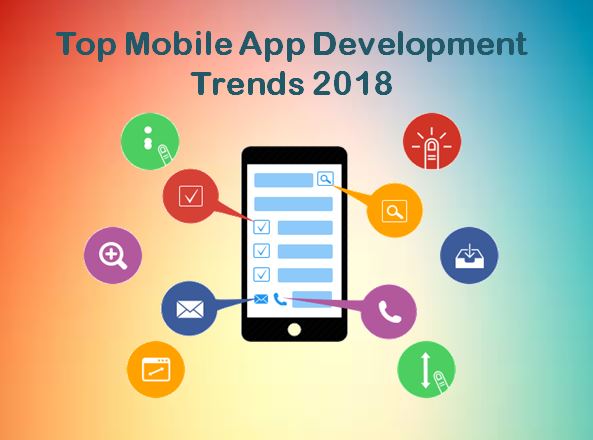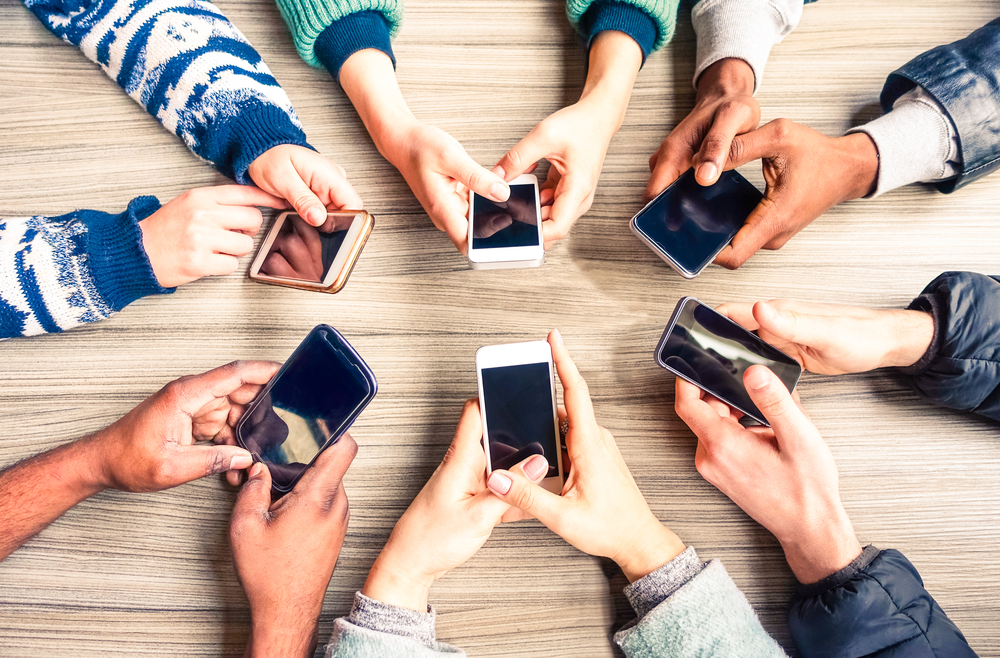Smartphones have become an extension of our very being in recent years. We use them for music, alarms, clocks, messaging across multiple platforms such as good old SMS, to Viber, WhatsApp and FB messenger, catching up on news, watching YouTube videos, checking email, corporate apps for time management, project management and many other tasks. It’s this usage that helps drive innovation, new ideas and exciting development trends to meet a growing demand on how we engage with our devices and the apps on them. And according to trend watchers, more than 50% of search queries globally come from mobile devices. Here are some of the most exciting and important trends and tech ideas to keep an eye on in 2018 and beyond, some of which are described in MMA’s Mobile Trends report.

1. Artificial Intelligence (AI)
AI is set to offer business users some very mouth-watering insights via advanced analytics, cognitive interfaces to complex systems and machine learning tech.
With Microsoft Pix, SwiftKey AI and Hound, we are seeing just how powerful AI is proving to be in the mobile app space. The main reason being that mobile devices are the easiest way to get customer feedback.
2. Virtual and Augmented Reality (VR / AR)
Virtual Reality defines the online virtual world whereas Augmented Reality serves as a game changer. The success story can among other be found in the popular Pokémon GO game. The experts across the globe state that the overall revenue of VR and AR will be $150 billion by the next two years. We are likely to see VR and AR move away from the mobile phone form factor though, to being embedded in things such as lenses on your glasses, or your car window.
3. Internet of Things (IoT)
Smart cities and homes are the future of today’s generation. The year 2018 will witness a drastic change in linking IoT with the Mobile Apps. Businesses are watching out to implement IoT in the manufacturing, health, automotive and retail industry.
Under the IoT environment, the people will be able to use their Smartphones, tablets and Smartwatches to integrate varied apps and tools. Forbes states that the Business-to-Business IoT segment will generate nearly $300 billion by the year 2018 and beyond.
The watches by Apple are the latest example under IoT. Moreover, to meet the IoT demand, Google made available Android Things.
4. Blockchain
Blockchain are big business networks; way beyond currency exchange. “Bitcoin was just one of the technology’s successful implementations” – says Fulvio Xavier, co-founder at Smartchains, a Brazilian startup specialized in blockchain.
According to IBM and Moller-Maersk, the goal is to use block chain to digitize supply chain, and to speed up the global market and help the sector save billions of dollars – bureaucracy and paperwork respond to up to one fifth of the total cost of this mode of transportation. Disney has already developed its own blockchain, called Dragonchain. It has dozens of different uses, such as ticket sales, a marketplace for intellectual property and the security platform for IoT.

5. Wearable Apps
This market is diversifying and is set for substantial growth over the coming years.
The market is focused on offering greater availability of cost effective fitness apps, supporting an ever-increasing rise in the total number of lifestyle diseases, which is being boosted by a drop in the cost of wearable devices, and the growing demand from the market for sports and fitness based apps.
There is a now huge range of wearable devices available, from smart sneakers that analyze your walking pattern, to smartwatches that count your calories, wristbands that assess your sleep quality and smart gloves that help you with your golf swing. Expect this to only get bigger.
6. Location-based services
Application for this tech is vast across hotels, museums, sports and event venues, restaurants, retail outlets, healthcare and much more.
Helping people and business with relevant location-based information is only going to rise. While location now is giving context information to apps and advertisers, it is expected that AI and Machine Learning will lead the next chapters on location-based services.
7. Cloud-based apps
Cloud computing has earned its buzzword status in recent years. For apps, it’s all about reducing the impact on a mobile devices’ internal memory. Think of Dropbox or Google Cloud.
8. Mobile payments
The way technology develops which change the lifestyle of people along. Mobile Payments is one such trend which is implementing everywhere. Customers widely used internet banking or credit/debit card for their purchase both online and offline.
Which implementation of Mobile payment technology people are gradually changing to m-commerce, by paying through mobile apps. With the increasing demand and easy method, Mobile payments looked to be important trends for mobile apps in 2018. In certain markets, like China (>600m active ewallet users) and India, mobile payments have completely transformed the societies – in India, arguably as fast as the last 12 months.
9. Personalization
Personalization is huge, and the demand for it from business has grown exponentially. Examples of personalization that many of us understand come from the likes of Airbnb, Netflix and Spotify. They monitor your preferences — the trips you take, the movies you watch and the searches you perform on their platforms, and then they tailor content to your behavior — to offer you a far more personalized, targeted experience. Common for these services is that the mobile platform is by far the biggest usage platform.
The trends are clear: The usage of mobile apps has been on the rise and in the upcoming year, there will be various innovations of latest technologies and platforms that will make the work easier for the companies and the end-users. As a developer, this can help you to be at the top of your game with either a new innovation or leveraging these trends in your mobile app development and mobile app marketing strategies.
Share this article on